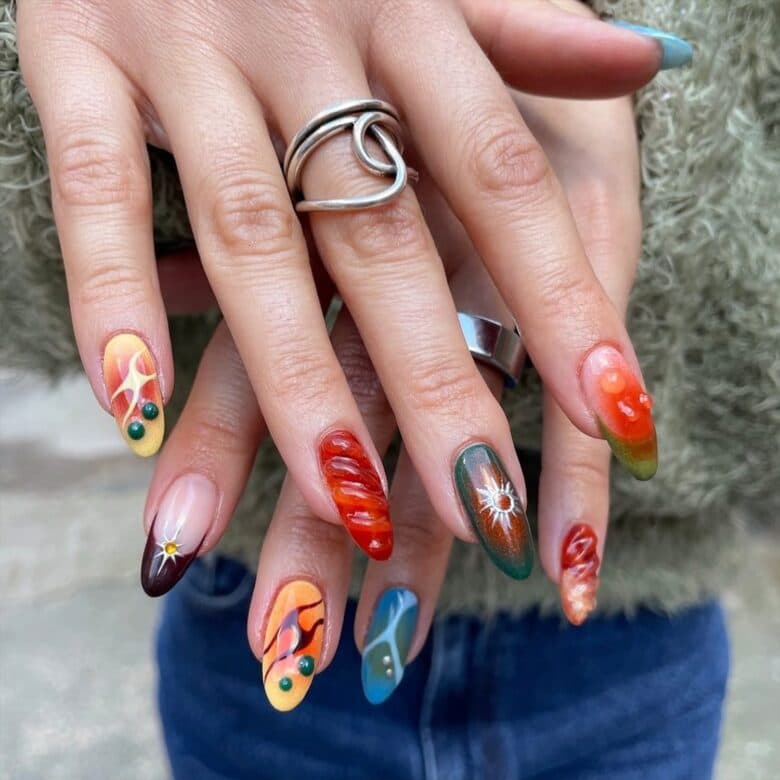Rental clothing apps are bringing young Northern designers to the forefront of fashion

Especially from the North of the UK — there feels to be a distinct lack of voices in the fashion industry. The appetite for Northern designers however, is clear, and some of the industries most celebrated designers are from up North (Patrick McDowell, Matt Bovan, SS Daley and Vivienne Westwood, anyone?) Promoting young designers is essential for the future of fashion, especially remote talent. Evidently, the future of design relies on those outside of the traditional fashion institutions as much as it does the likes of London fashion schools.
The solution, though, could be in new social clothing rental apps. Newcomer Loanhood, for example, has embraced the idea of marketplace renting. This app allows you to temporarily rent out your clothing items, including original designs. Since July when the app first launched, founders Lucy, Jen and Jade have grown their company by 103%. Their commitment to expanding the horizons for emerging talent is essential for the direction in which fashion is headed, as HUNGER speaks to one young knitwear designer about how much the platform has helped his journey into fashion design.
“I was contacted by Loanhood and they asked me if I would like to start loaning my garments,” says Drew Kent, a Liverpool-based design student studying at Central Saint Martins, “I immediately said yes!” Though Kent has had no trouble gaining clientele for his self-described “camp, flamboyant and glittery” work, including the likes of drag performer and recording artist Ginny Lemon, the app has proved a priceless opportunity for the innovative knit designer.
“Being a fashion student coming from a working class background I am constantly worried about the cost of materials and how I am going to manage to create what I want on a budget,” states Kent. Just 16% of people in the creative industry are from working class backgrounds according to the Creative Industries Policy and Evidence Centre, and fashion in particular is notorious for its elitism.
“I knew it was an amazing opportunity for young designers to get something back from the industry. I am often left unpaid for lending my garments for shoots but joining Loanhood enabled me to loan my garments and not worry about chasing after fees once the shoot is over. I now have all my garments available to loan on the app,” he continues. “I think Loanhood is offering really good opportunities to give designers a professional insight and understanding of how sustainable fashion will look in the future. This is certainly only the beginning for people forgetting about single wear fashion and loaning, allowing more people to wear the same garments!”
Loanhood added: “We can give emerging designers a platform to share their designs and talent with a community. We offer a unique package that also gives these talented individuals an amazing opportunity to have their designs promoted.”
“I think keeping my name on the map is all about consistency,” comments Kent, having recently been concerned about his move back to Liverpool from London. “You have to frequently post new and exciting things to Instagram, people are always looking for the freshest thing in fashion so to keep up while being back in Liverpool has been difficult at times but I think I have finally found my pace again.”
With these new kinds of fashion apps, the approach to helping those in the creative industry is proving to be the first of a kind, and in working with educational fashion institutions, will be revolutionary for those looking to get into the industry. Loanhood told HUNGER how they were “proud to have the support of the world’s largest showcase of BA fashion talent, Graduate Fashion Week, as well as LCF, LJMU and GCU.” In the first few months of launching the app, the three founders took on 80+ emerging designers, resulting in “over 70% of the designer’s pieces being available to the public as rental.”
This generation of young people are more aware of the need to boost underrated creative talent, no matter the socio-economic background. Not just that, but with the climate crisis at hand, we are keen to sit at the junction where creativity and sustainability meet. The likes of Popswap and Nuw are all social media apps that encourage the idea of your own clothing being swapped, traded and sold in seconds, which for a young person, can mean a guilt-free, quick way of making some essential extra cash.
Platform Finds also value the importance of secondhand clothing, but like Loanhood, feel that social selling platforms are the future for young creatives. Built on a structure of resale,“Finds is a social marketplace to empower creative communities to drive a circular fashion culture,” says Jemma Stacey, founder and CEO. “Being community-lead from the offset we built the platform to provide a home for casual wardrobe clearouts to secondhand vintage resellers, a space which mirrors thrifting IRL.”
The idea of community is essential to the DNA of these marketplaces, and as Finds explains that bringing creatives together is the way forward. “We regularly host community events both online and in person with our selling community. This allows them to pick up tips as young business owners from one another and create viable businesses. For many of our sellers this is now their full-time income, which for us, is really exciting to see and be a part of.”
The need to reach out to those who may not have direct access to fashion is something that the industry desperately needs. With the likes of Loanhood and Finds, we can surpass the tight bubble of individuals in London and widen opportunities to those working remotely, like that of Drew Kent in his home-studio in Liverpool. For young designers, budding stylists, and photographers, the rental social marketplace is a much needed opportunity to gain access to the fashion world.

